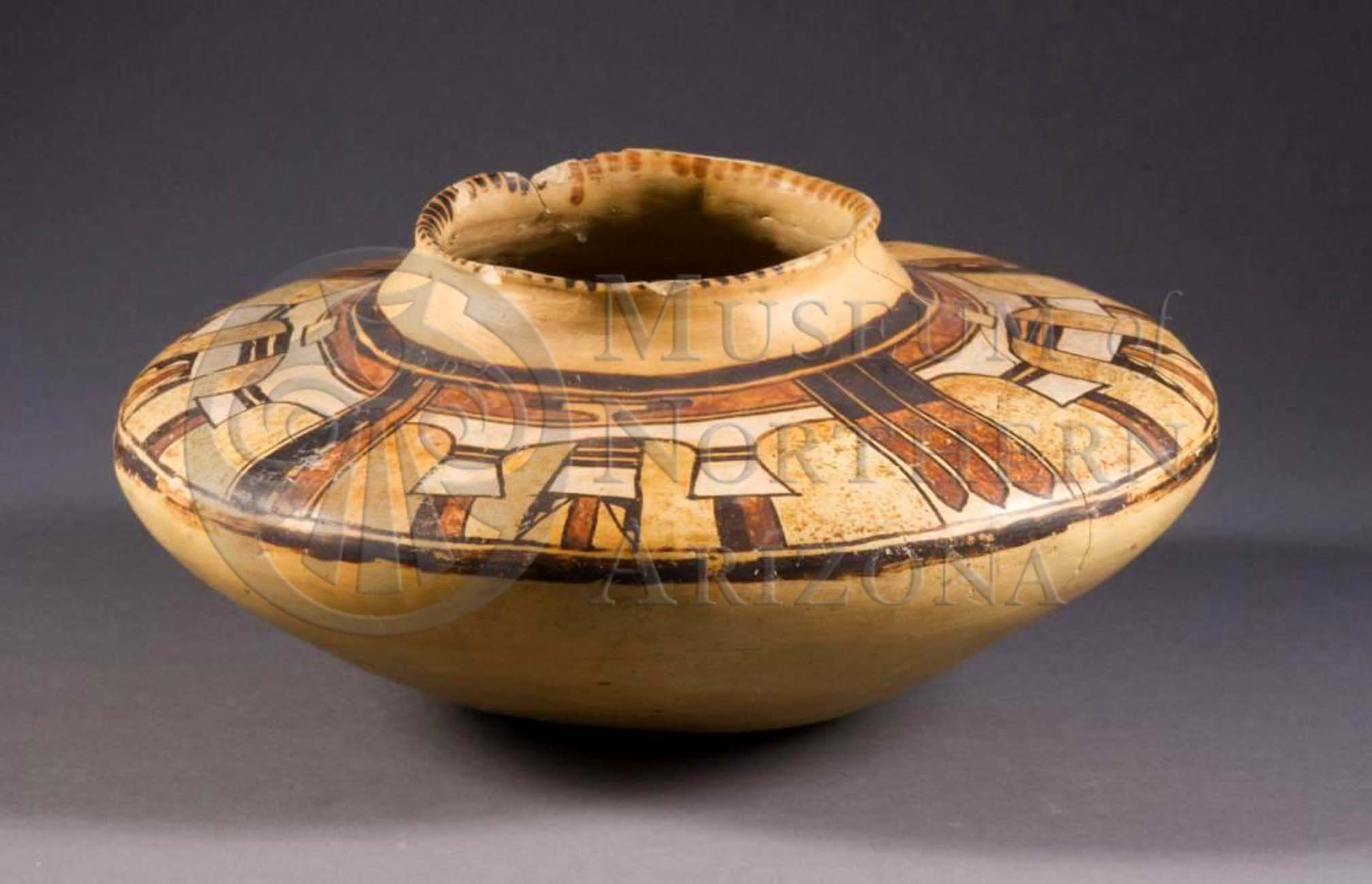
Sikyatki Polychrome jar from the Museum of Northern Arizona collections. Click the image to open the Sikyatki Polychrome gallery.
Like other Jeddito Yellow Ware types, production of Sikyatki Polychrome was centered on the Hopi Mesas, but distribution was widespread throughout the Southwest.
Archaeological Culture: Ancestral Puebloan, Hopi
Date Range: A.D. 1375 to 1625 (per Kelley Hays-Gilpin, Northern Arizona University).
Construction: By coiling.
Firing: In an oxidizing atmosphere.
Core Color: Cream to yellow, brownish, pinkish in some specimens.
Temper: Fine quartz sand rarely visible to naked eye; occasionally reddish angular fragments; sand temper rarely visible without a hand lens either in cross-section or on vessel surfaces.
Surface Finish: Compacted, highly polished; occasionally a few minute whitish or yellowish flakes visible on the surface.
Surface Color: Creamy yellow to bright yellow; yellow predominates; over-fired specimens usually orange; surface and core do not contrast, except in over-fired specimens.
Forms: Bowls, jars, dippers.
Vessel Thickness: 4.2 to 8.6 mm (bowls); 4.1 to 8.2 mm (jars).
Decoration:
- Paint: Thick to watery black or brown; red.
- Pigment: Mineral: black (iron-manganese with iron-oxides); red (hematite, possibly limonite).
- Design: Geometric (early and late), life forms (late); characterized by black and red and yellow (base); bowl interiors and jar exteriors always decorated, bowl exteriors usually decorated, jar rims sometimes painted if flaring.
Comparisons: Early Sikyatki Polychrome is like Awatovi and Jeddito black-on-yellows, but has the addition of red outlines. Bitahochi Polychrome has white outlines, not red. Kawaioku Polychrome has massed white paint in addition to red; Awatovi Polychrome is engraved through the black paint; Matsaki Polychrome has thicker walls, a crackled buff or tan slip, and sherd temper.
Other Names: Polished decorated ware, Yellow Ware, Sikyatki Ware
Compiled from the following sources:
Colton, Harold. (1956) Pottery Types of the Southwest. Museum of Northern Arizona Ceramic Series No. 3. Flagstaff, Arizona.
Nichols, Elizabeth. (2005) Jeddito Yellow Ware – Type: Sikyatki Polychrome, Ceramic Field Identification Manual: Agua Fria National Monument Project. Museum of Northern Arizona, Flagstaff
Compiled by:
April Peters, Northern Arizona University Anthropology Laboratories.
